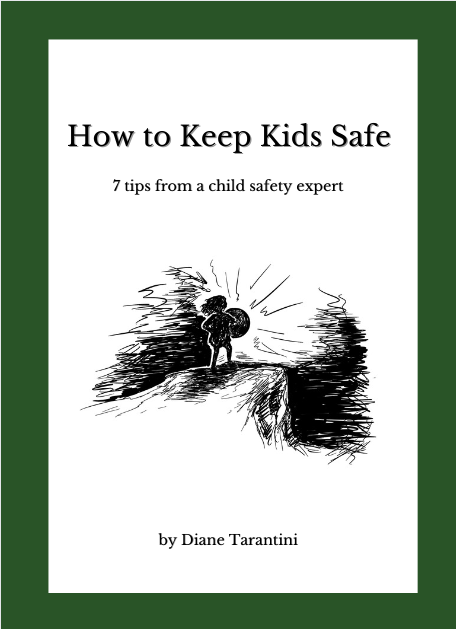What does it look like when someone is plotting and planning a not-so-nice future with another individual, adult or child? I discovered the formula for abuse—relational and/or sexual—in Sandy Kirkham’s riveting memoir about her abuse experience at the hands of her youth pastor. Read on if you’re wondering:
Am I being groomed for (sexual) abuse?
At the back of Kirkham’s book, Let me Pray with Prey Upon You, is a list of what the priming process looks like. In this section, Kirkham refers to the work of Dr. Michael Welner, a forensic psychiatrist who conducted research on the stages of grooming. According to Welner, there are five initial set-up steps, followed by two additional phases that maintain the abusive relationship. Though I tend to write and speak about child sexual abuse, I believe this process also applies to adult relationships.
To help you remember the various components, I created an acronym for the process: PARTS.
P is for PRAISE.
In body safety assemblies, I often tell kids the most common pick-up line from a stranger, in-person or via a DM (direct message) goes something like this:
“You are so good-looking! With your face and that body, you should be a model!”
This line is very effective because everyone wants to be told they’re beautiful. Or handsome. We all want to feel attractive and desirable. As they say, “Flattery will get you everywhere.”
A is for ATTENTION.
We all want to feel seen. And heard. And understood.
It’s gratifyinging to know people want to spend time with us because they enjoy our company and value what we have to say.
Listen to these words from a sexual predator, found in the book, Conversations with a Pedophile: “I abused so many innocent children simply because I was willing to listen. If parents can provide the same sounding board that I offered, then the children would have no possible need for the magic I sell.”
Sometimes the PRAISE and ATTENTION phases are called, “love bombing.”
Pro-Tip for caregivers: Since sexual predators seek out kids who are starved for attention, be sure to keep your child’s “love tank” full. I talk about that in this Instagram Live conversation with @toughtopicsmom, Kimberly King.
R is for REPLACE.
As in, replace the victim’s loved ones. Also known as isolation.
Just like a predator in the wild, an individual with an inappropriate agenda will work to lure their potential victim away from their family and friends.
“No one understands you like me,” is a common phrase used in this phase. “They don’t get you. I do.” Or, “They treat you like a child. I can see how grown-up you are.”
T is for TRUST.
As in, trust building.
Last year a teenager confided in me that she’d been asked a number of times—via DMs— for explicit photos. “How does that whole process play out?” I asked her.
“They message or text you for a day or two. They act all buddy-buddy like they’re your kind and caring best friend. Sometimes they give you advice. They may even share a struggle they’re having. Stuff like that. Then at some point, they ask for a ‘sexy pic.’ They’ll assure you that you can trust them, that they won’t show the picture to anyone. Or, they’ll promise to delete the photo as soon as they check it out.”
Predators will try to convince a kid that they are more trustworthy than their parents or caregivers. Even the kids’ friends. They’ll also encourage the sharing of secrets, which often, they’ll use against them later.
S is for SEXUALIZE.
Once the above steps are in place, the offender can now sexualize the relationship. Every caregiver’s nightmare, right?
Now that the PARTS are in place, how does the abuser maintain the relationship?
Enter criticism.
The predator’s praise will become peppered with little digs. Initially, the comments may be couched in humor: “Your laugh like a donkey!” Or, “Someone’s getting a little chubby…”
In addition, the abuser may reduce their level of attention. Or increase it. Some abusers will become extremely possessive. These changes in the abuser’s behavior keep the victim perpetually off balance and can cause them to desperately do whatever it takes to please the abuser.
Enter “gaslighting.”
Gaslighting is when one person convinces another that they are the problem. Common gaslighting phrases include:
- You’re overreacting.
- You misunderstood me.
- That’s not how it happened.
- You’re crazy.
If a victim attempts to stand up to the abuser, or tries to pull away, the abuser will change tactics. They may:
- Push harder.
- Beg forgiveness.
- Return to providing lavish affection and attention.
This whole process of laying the groundwork happens slowly.
The victim is like the proverbial “frog in a pot of boiling water.” The abuser increases “the heat” so gradually, the victim doesn’t recognize the danger they’re in.
If you want to see these steps in action, get a copy of my child safety book, The Brave Knight. I wrote the book to teach kids in a non-threatening way what the language and behavior of grooming looks like.
Now that you know the “am I being groomed” signs, be on the lookout for them in your own life and the lives of your loved ones.
*This post includes a few affiliate links. If you click and buy, I earn a penny or two.







